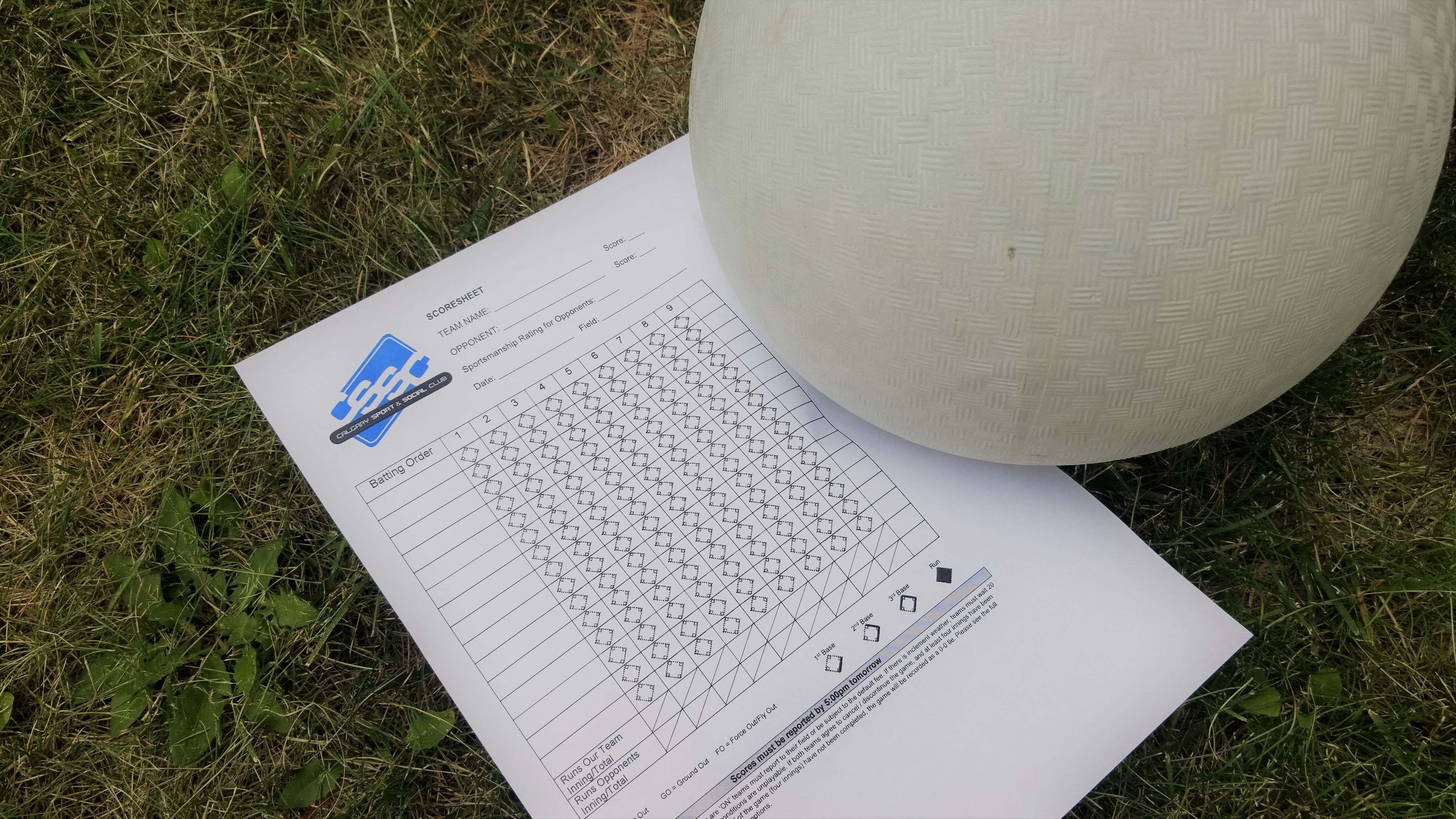
To win the game you will need a strong kicking order. We wanted to share a few tips and tricks on scorekeeping and creating a killer, yet legal, kicking order.
Scorekeeping:
Both teams need to bring a score sheet to each game; Click Here for an CSSC scoresheet. Usually I just print off a bunch and put them in my equipment bag. A clipboard or something similar can be really helpful for whoever is keeping score and make sure you don’t forget a pen! Hopefully you have someone on your team that is keen to keep score; I find that scorekeeping is done more accurately if you have one person in charge of keeping track for the whole game.
You must count the runs for your team, the kicker results for each kicker on your team, and the number of runs for your opponent as well. If you only have 10 players on your roster, then you will have to keep track of your opponents’ runs while you are out in the field; usually this is a group effort. If you have more than 10 players, one of the players riding the pine can keep track. I usually implement a tally system when I do it, as it can be hard to keep track of the runs when you get scored on A LOT! Which hopefully isn’t a problem for you, too.
One of the most important scorekeeping duties that often gets forgotten is checking in with your opponents at the end of the game to ensure the scores you will be submitting to the Club match. You wouldn't believe how many scores get submitted on a daily basis that are completely different than the opponents’ submission. Any score discrepancy should be discussed and resolved at the field between captains. Again, when I play, we often confirm the score throughout the game, as it is easier to determine where the mistake was made if there was one. Who knows, this type of open conversation could lead to some fun and friendly banter with your opponent, and maybe even lead to post game appies, beers… or maybe lifelong friend? The possibilities are endless!
Kicking Order:
A good or bad kicking order could make or break a game for your team. If your team has an even number of guys and gals the order is typically more straight forward, as many of the rules stem from number of males kicking in a row and minimum female roster requirements.
There are 3 components to the kicking order that everyone should understand:
- All players at the game must be listed in the kicking order (male and female). A player cannot field if they are not part of the kicking order.
- There is no limit to the length of the order. Teams with more than 10 players can extend their kicking order as long as the male/female ratios meets the guidelines below:
- A typical kicking order is M-M-F, assuming there are twice as many guys as girls.
- At only one point in the order can 3 males kick in a row. This includes the crossover from the bottom of the order to the top.
• For example, M-F-M-M-M-F-M-F-M-M Is not a legal kicking order! - 3 females must kick in the first 10 batters. If only 2 females are present at the game, every third female spot is an automatic out.
- If you have more males than females to adhere to the above ratios, you can still kick all of your male players by penciling the word “female” in to make the appropriate ratios, rather than specific names. In this case your females would rotate evenly through the female spots.
• For example, if you have 3 females at that game but need 5 female spots to get all your males kicking, the 3 females would just rotate through those 5 spots.
- Changes made to the kicking order after the start of the game (late players, etc.) must be approved by the other team and are subject to the above guidelines.
- When building a kicking order, and I know someone is going to be late, I figure out a kicking order that works with them near the bottom to make it easier to add them once they arrive.
There are my tips and tricks to having successful, expertly score kept, and legally batted season!



























